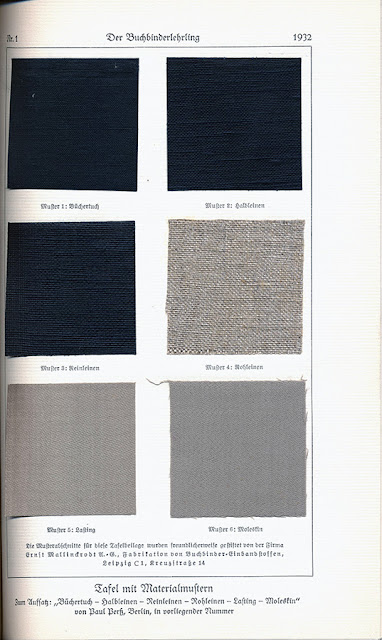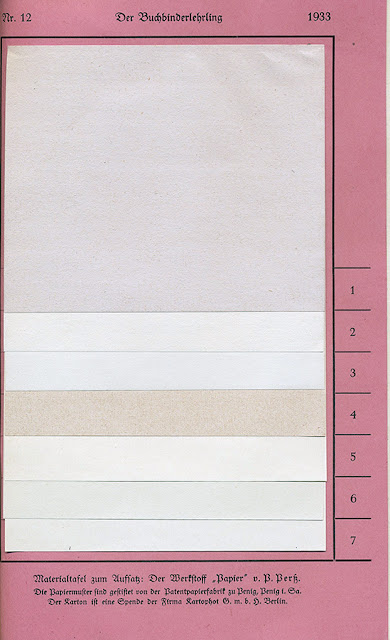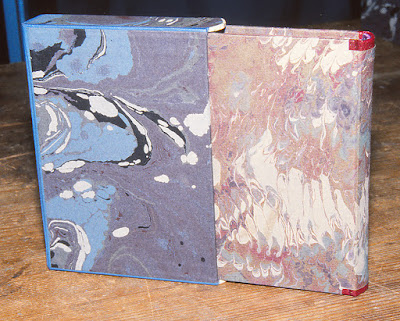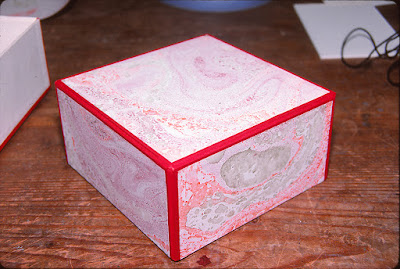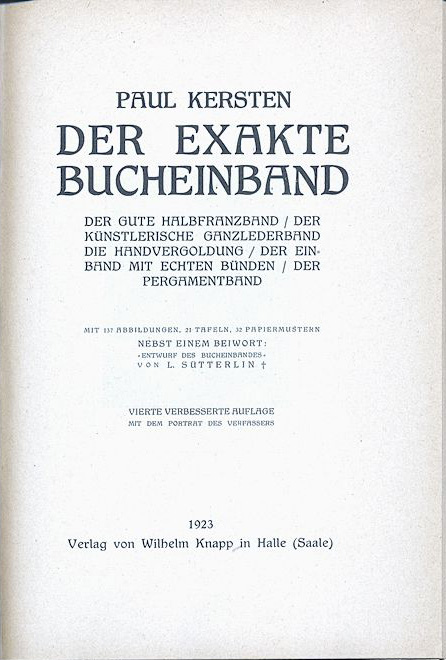Given the date of publication and the torn-out title page in my copy, I'm going to assume that it contained information linking it to the National Socialist government... Per the OCLC record, it was published for the Gauwaltg. d. NS.-Lehrerbundes im Gau Weser-Ems (Administration of the NS Teacher's Federation in the Weser-Ems District) that was based in Oldenburg.
The book would have been used in the teaching of paper and book-related crafts to/by teachers working with the lower school grades.
Interestingly, a Heinrich Pralle taught this subject at the Staatliche Kunstgewerbeschule zu Hamburg where Franz Weisse and Ignatz Wiemeler also taught. The book Die staatliche Kunstgewerbeschule zu Hamburg (1913) shows examples of works created by Pralle's students starting page 383. Given the similarity in name and focus, were they father and son?
 |
| Workshop where teachers would have been taught these paper crafts and more at the Staatliche Kunstgewerbeschule zu Hamburg ca. 1913. Click to enlarge. |
 |
| Paper crafts as taught by Heinrich Pralle at the Staatliche Kunstgewerbeschule zu Hamburg ca. 1913. Click to enlarge. |
Willi Pralle's book introduces the topic in the same manner with specific instructions for a number of excercises... A similar book is So fertige ich allerlei Buchbinderarbeiten (1911) by Richard Parthum.
 |
| The illustration depicts a class-sized tool cabinet for the making of paper crafts. |
 |
| Schematic for a simple octavo stab-sewn notebook and loose documents. |
 |
| Schematics for making round boxes with lids. |
 |
| Tipped in paste paper swatches. |
 |
| Tipped-in paste and marbled papers. |

















